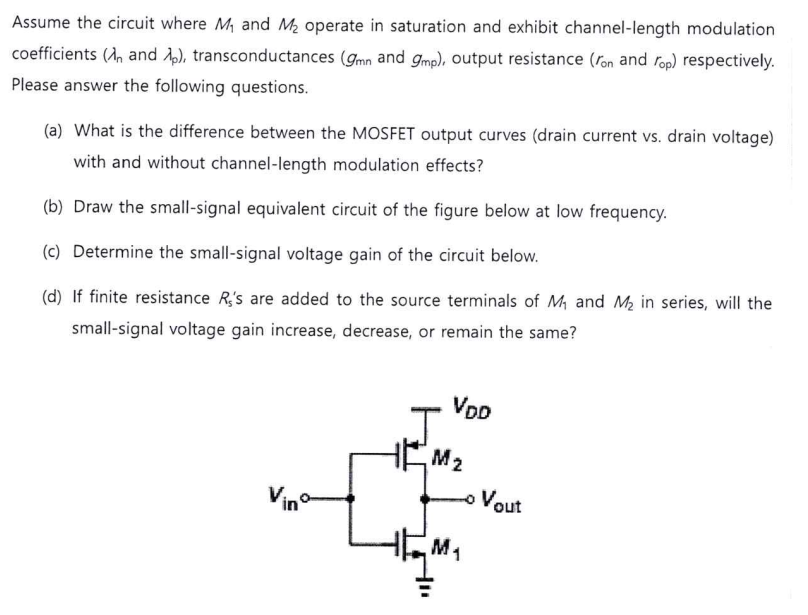Assume the circuit where M1 and M2 operate in saturation and exhibit channel-length modulation coefficients (λn and λp), transconductances (gmn and gmp), output resistance ( ron and rop) respectively. Please answer the following questions. (a) What is the difference between the MOSFET output curves (drain current vs. drain voltage) with and without channel-length modulation effects? (b) Draw the small-signal equivalent circuit of the figure below at low frequency. (c) Determine the small-signal voltage gain of the circuit below. (d) If finite resistance R5′s are added to the source terminals of M1 and M2 in series, will the small-signal voltage gain increase, decrease, or remain the same?
